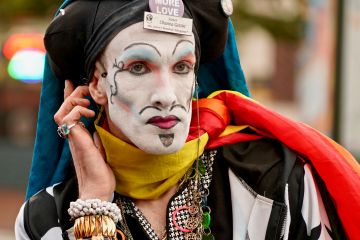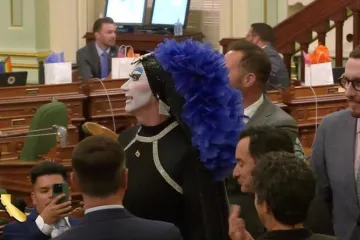CNA Staff, Oct 25, 2023 / 17:50 pm
Concerned students at the University of Notre Dame have objected to an upcoming drag show set to be held on campus as part of a one-credit course, which the university has defended as falling under academic freedom.
In a letter to the editor published Oct. 24 in the Observer student newspaper, seniors Madelyn Stout and Merlot Fogarty said they had reached out via email, on behalf of themselves and other concerned students, to Father Gerry Olinger, vice president of student affairs, to object to the planned Nov. 3 show, which is set to follow a symposium on “efforts to ban drag.”
In their email, the concerned students said they expressed to Olinger “that university funding will be paying drag artists to come to Notre Dame, dress as women, defile femininity, and most importantly, promote the disordered ideology that gender and sexuality are fluid — in direct contradiction to the Catholic Church’s teaching.”
The show is planned as part of a course taught by professor Pam Wojcik for a class titled “What a Drag: Drag on Screen — Variations and Meanings,” offered through the film, television, and theater programs at Notre Dame, the Irish Rover reported.
Wojcik told the Rover in September that she hopes to “give students knowledge about an art form that has been misdescribed” and answer common misconceptions about drag, adding that “Drag won’t turn kids gay.” She also asserted that it is “dangerous to put bans [on drag].”
As reported by the students, Olinger replied to the email, citing outgoing university president Father John Jenkins’ recent emphasis on academic freedom.
“This freedom in academic contexts is critical, and the university protects this freedom even when the content of the presentation is objectionable to some or even many. Because the event you reference is part of a one-credit course in film, television, and theater on the history of drag, the principle of academic freedom does apply in this instance,” Olinger wrote, as reported by the students.
Stout and Fogarty argued that drag shows, which generally feature biological males dancing provocatively, amount to the harassment of women and thus do not fall under the umbrella of academic freedom.
“Nowhere else in our nation do we accept misogynistic sexual stereotyping and objectification as something to be celebrated,” the students said.
“This event is not for the sake of study or dialogue. It is not the result of a faculty or students’ research. It is not for the sake of academic inquiry. Three male artists are being paid to parade around in provocative women’s clothing under the guise of self-expression and bodily autonomy. If this is academic freedom, then the phrase is meaningless. Academic freedom should not be used as a weapon of opinionated activism.”
Stout and Fogarty held up the university’s namesake, the Virgin Mary, as an example of an image of femininity for women on campus to aspire to, not the distorted images seen in drag shows.
“Notre Dame, Our Lady, the Mother of God: She is the essence of the spirituality, femininity, and motherhood that women of faith aspire to,” Stout and Fogarty wrote.
“And yet, the university refuses to protect such an image … [T]o refuse to protect the beauty, sanctity, and dignity of the women of this university is to refuse to protect the woman who sits upon our dome,” they said, referring to a recently refurbished statue of Mary on the most prominent campus building.
CNA attempted to contact the students for further insight and comment but did not receive a reply by press time. The university also did not respond to CNA’s request for comment.
“The university’s moral obligation to the truth and protection of her students absolutely overrides a shallow notion of academic freedom masking activist falsehoods,” the students concluded.
“We cannot stand for the normalization of disordered ideology. We cannot stand for the pursuit of false ideas of the human person. And we certainly cannot stand for the persistent ridicule of women and violation of our dignity. Prejudice against the truth of the human body should have no place here, especially at a university under the patronage of Mary, Mother of God.”
(Story continues below)


.jpg?w=670&h=447)


